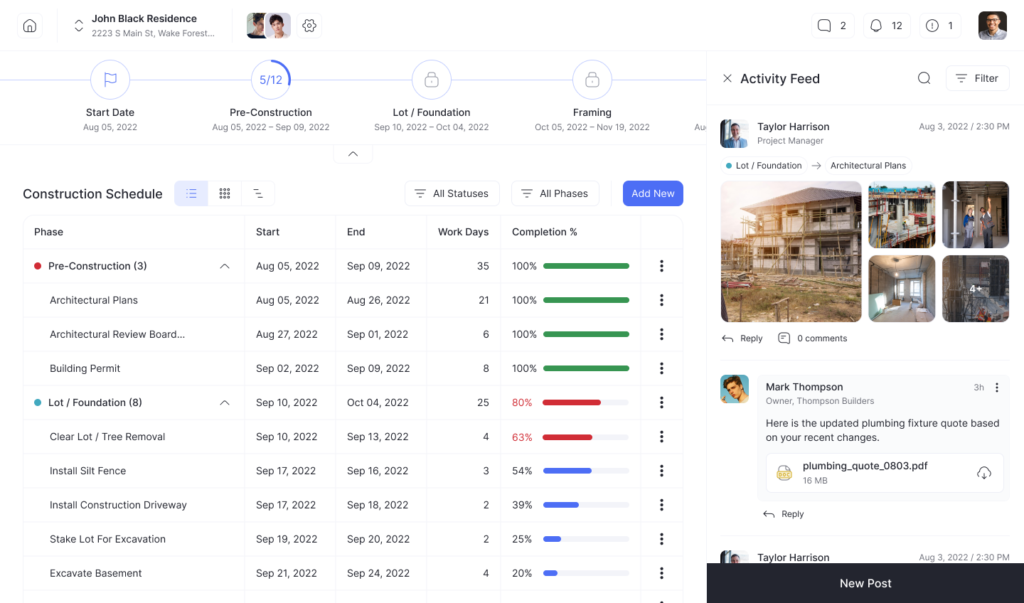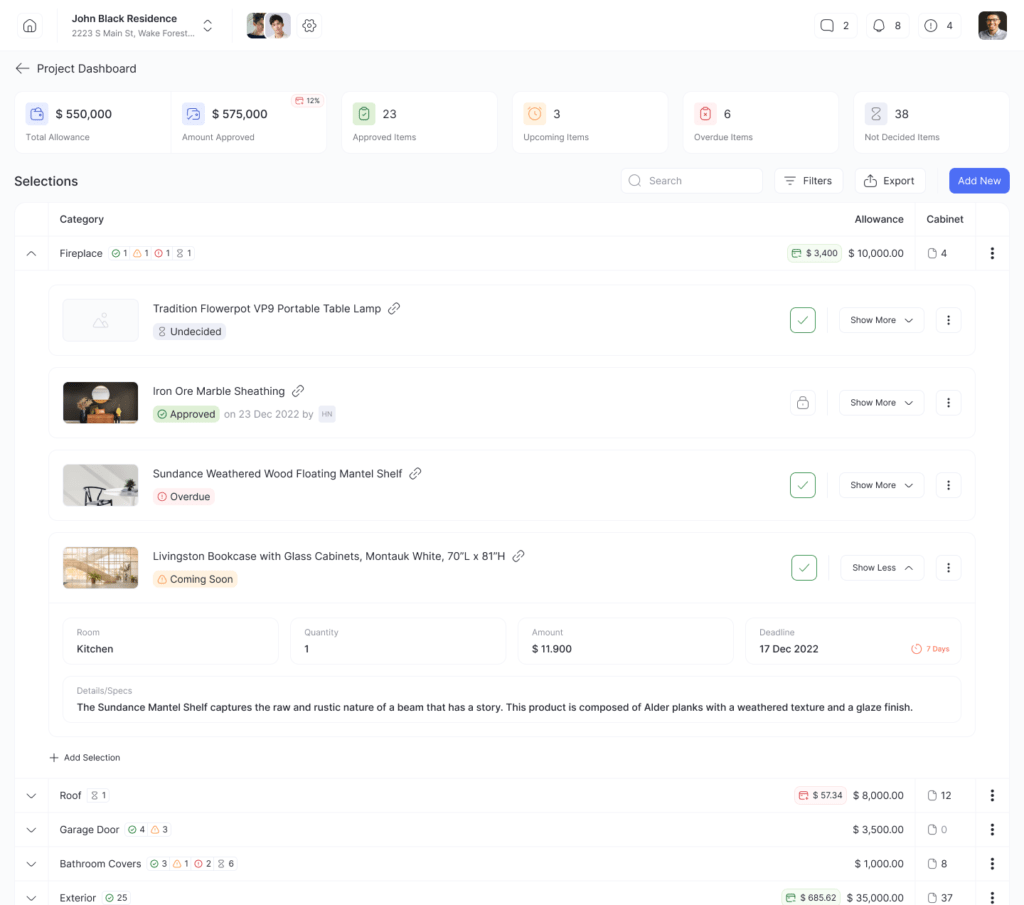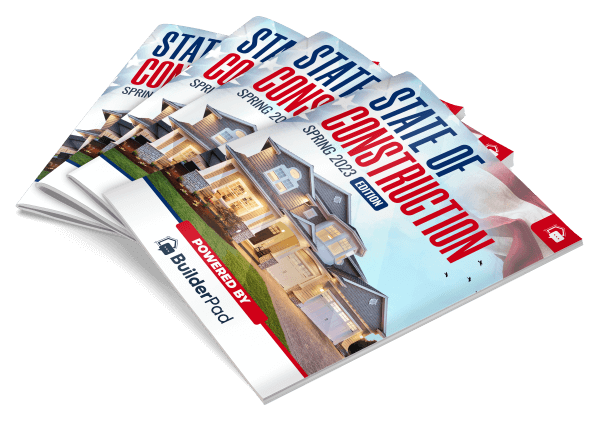Construction projects, much like icebergs, have more beneath their surface than the initial plans may show.
While a carefully crafted blueprint can lay out a path to a new structure, there are often hidden costs lurking in the depths, waiting to surface as the project progresses.
These unexpected expenses can strain budgets, stress stakeholders, and stall schedules. This article explores the nature of these costs and how to manage them effectively.
Uncovering the Unseen

The first step in managing hidden costs is to recognize their potential sources. These can include:
- Site issues: Unstable soil, hidden underground structures, or contaminated materials can necessitate additional work. A comprehensive site survey and geotechnical study can help uncover these issues early.
- Design changes: As projects evolve, clients or regulations may require alterations that weren’t planned for initially. Maintaining compliance as codes evolve takes proactive tracking.
- Material price fluctuations: The cost of materials can vary due to market conditions, availability, or tariffs, impacting the budget. Monitoring commodity markets and staying on top of trade policy news is crucial.
- Labor challenges: Skilled labor shortages or unexpected labor costs can arise, particularly in specialized trades. Long project timelines make retaining qualified workers difficult.
- Permitting delays: Regulatory approvals may take longer than expected or come with conditions that require design adjustments. Navigating bureaucracy requires expertise and relationship building.
- Weather disruptions: Severe weather can delay work and damage materials, leading to additional costs. Advanced weather data analytics can inform contingency plans.
Strategies to Navigate Financial Uncertainties

Managing hidden costs begins at the earliest stages of project planning and continues through to completion.
Here are strategies to mitigate unforeseen expenses:
Diligent Planning
A thorough site analysis and pre-construction due diligence can spotlight potential financial pitfalls before ground is broken. Engaging with local planning authorities and utility companies can also preempt costly reworks or delays.
A thorough review of local regulations and a realistic appraisal of material and labor markets are also vital. Leaving no stone unturned is key.
Contingency Budgets
This financial buffer should be based on historical data, complexity of the project, and the perceived level of risk after initial assessments.
Regularly reviewing and adjusting the contingency as the project unfolds can keep it aligned with evolving risks.
It’s a safeguard that ensures that projects can adapt to unforeseen costs without jeopardizing overall financial health. Contingencies require constant refinement.
Flexible Design Approaches

Adopting designs that can be easily modified can reduce the need for expensive backtracking and redesigns.
Such adaptability in design also allows for phased implementations, which can spread out potential financial impacts over time.
This approach can result in significant savings and more efficient use of resources. Build in malleability from the start.
Robust Contracts
Contracts should include clear clauses for change orders, dispute resolution, and escalation to avoid ambiguity that could lead to additional expense.
It’s also essential that these contracts define the process for handling unexpected site conditions or the discovery of hazardous materials.
This clarity helps all parties manage expectations and responsibilities. Airtight contracts prevent confusion.
Regular Monitoring
Implementing a real-time construction management software can offer instant insights into cost overruns and budgetary drift.
This approach not only tracks expenses but also worker productivity, which can be a leading indicator of potential overruns.
Regular financial reviews keep the project on budget and stakeholders informed. Real-time data enables real-time responses.
Clear Communication
Establishing a centralized communication hub, such as a project management portal, ensures all stakeholders are updated on potential issues simultaneously.
BuilderPad provides diverse tools to create a centralized communication portal, including the activity feed where all the participants can post messages and updates, upload files and tag one another:

Weekly meetings with key personnel can also preempt financial surprises by discussing ongoing work and forecasting upcoming challenges. Transparency in communication is key to financial control. Open channels foster collaboration.
Alternative Materials and Methods
By keeping abreast of emerging technologies and materials, project managers can offer innovative solutions that may be more cost-effective than traditional methods.
Use BuilderPad’s “Selections” feature to allows you to quickly suggest alternative materials and get quick approvals from clients.

It’s also beneficial to develop a network of suppliers to leverage competitive pricing and discover alternative material options when preferred choices become costly or unavailable.
Flexibility and resourcefulness can lead to substantial cost savings. Seeking creative solutions mitigates costs.
By integrating these strategies into the project management framework, construction professionals can create a proactive defense against the hidden costs that can threaten the financial stability of their projects.
Though hidden costs can never be entirely eliminated, a robust approach to project planning and management can reduce their frequency and mitigate their impact, ensuring that the project remains as close to its intended financial course as possible.
Strategies to control hidden costs include:
- Comprehensive upfront planning and risk analysis
- Dynamic contingency budgets to buffer unforeseen expenses
- Flexible designs that can adapt efficiently
- Detailed contracts defining change order processes
- Real-time cost monitoring through PM software
- Open communication channels with stakeholders
- Exploring alternative materials and methods







